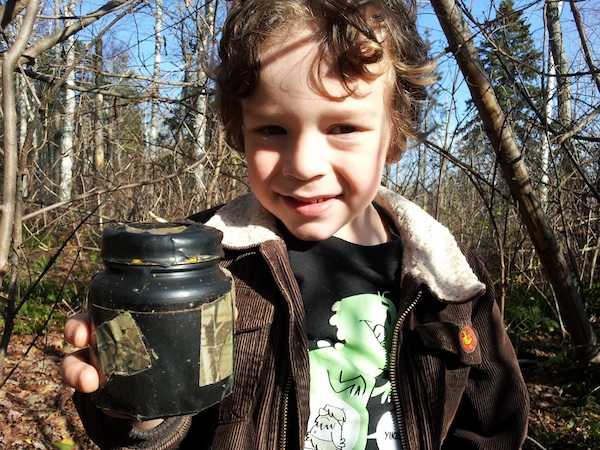I was challenged by Dean @shareski today on twitter. I’ve decided to believe 🙂 that he honestly just wants a clearer explanation on what rhizomatic learning is… so he posted the Einstein Challenge
“If you can’t explain it to a six year old, you don’t understand it yourself.”
? Albert Einstein
I’m going to try and do him one better, I’m going to write an open letter to my boy… Oscar, who is five.
This is him.
This is also him… from our podcast about dinosaurs. (i swear he really does know all these words…)
***********************
Hi Oscar,
I want to talk to you about charlottetownosaurus #3. I think you did a wicked job of explaining what we know about dinosaurs. I really enjoyed doing the examination of the dinosaurs with you… and am really hoping we can get to number 4 sometime this week. We did ramphoryncus, metriacanthosaurus and pteradactylus. I loved it so much I watched it for a third time today.
There’s something about your dad’s part in Charlottetownosaurus that has been bothering me buddy, and I want to talk to you about it. My part was mostly about asking questions… but i don’t think i did the best job I could. You know how we looked really closely at the dinosaurs to see what we could observe about their features – And we discovered that one Metriacanthosaurus had three toes and one had five? Daddy said “what’s wrong with the [five toed] dinosaur”? You gave a great answer… but i don’t think it was a good question.
I don’t think that’s a good way of thinking about it. We know what the books say about dinosaurs right? We have SIX dino-encyclopedias. And we compared our dinosaurs to those books and to the internet and we found our that metriacanthosaurus was a theropod and, therefore, had three toes. The five toed one was ‘false’. But you know the older books… how they talk about brontosauruses and about three fingered tyranosauruses? Our ideas about things change… we get more evidence… and we get a new hypothesis.
When daddy said “what is wrong with those dinosaurs” what daddy should have said was “How are those dinosaurs different from what we know about them”?
Here’s the problem. Did we talk any more about those dinosaurs after we said “wrong”? Nope. We just put them aside, and moved on. And picked up the next one and said “wrong/right” about it too.
What if I’d asked a different question… like “what would a five toed metriacanthosaurus be like?”
We could have kept talking. Made a new story… and still found out more about how toes are made, the difference between a theropod and an animal with five toes. We could have kept moving… kept talking, kept figuring stuff out.
Instead, daddy decided it would make for an easier show if we just talked about ‘right dinosaurs’ and ‘false dinosaurs’. My bad buddy. I’ll do better next time.
The problem is I should know better. All of the work you see daddy typing into the computer, when i go on trips or when i’m chatting with people on skype… this is what i tell them. We shouldn’t decide beforehand what we’re going to learn. We shouldn’t decide what’s ‘right or wrong or false’ just to make it easier. When we do that… we stop having fun. We stop making stuff up. And we stop creating.
You know those nasty weeds you helped me with in the flower garden? The ones you use the cutters to cut last summer? Those are a special kind of plant… just like the big ones in the backyard that daddy is always digging out…
They’re special because of the way that they spread, because of how hard they are to get rid of. You can pull the tops off them, you can dig down with a shovel like daddy does, but it doesn’t matter… the tiniest piece left in the ground will let it grow back. It’s not like a tree… You’ve seen daddy cut a tree… Is it going to grow back? Yeah… not so much. Those rhizome plants though… they just keep growing and spreading. (that’s what people call them… rhizomes. It’s the part of the plant that helps it make new plants)
That tree, that’s the way that daddy was asking you questions about the dinosaurs. Single ‘false’ questions that just ended when we were done. Daddy decided what would be easier, or what would make sense, and then asked you that question. Those questions ended the conversation. What daddy should have done was taken a lesson from those nasty weeds, follow the toes! Keep moving… follow the story. Pretty hard to stop that, we’d probably still be talking about the journey of the five toes metriacanthosaurus. You got to show that you knew the answer… but we didn’t learn anything new.
Daddy will try harder buddy. That dinosaur box is like our flower garden. We just need to fill it with rhizomes and our stories will never end.
********************
I’ll tell oscar this story tomorrow… we’ll see what he says.
